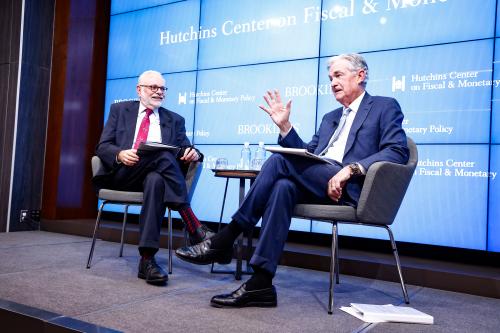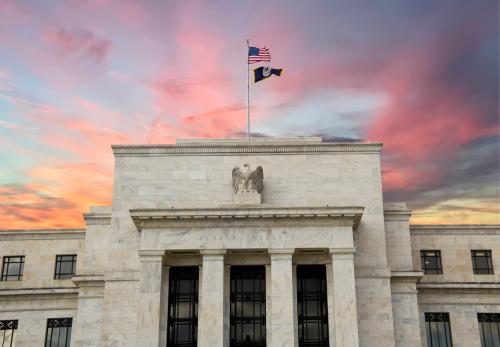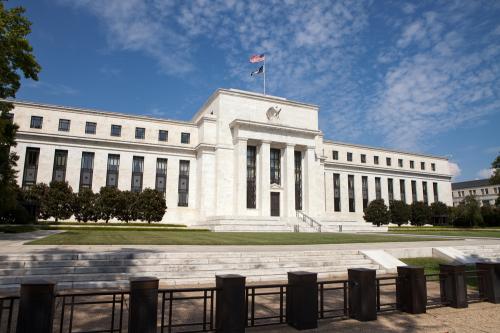This blog is a summary of a February 14, 2023 discussion on Twitter Spaces. Quotes have been edited for clarity. You can listen to the full conversation on Twitter here.
In the latest release, the Bureau of Labor Statistics reported that the Consumer Price Index rose 0.5% in January on a seasonally adjusted basis after increasing by only 0.1% in December. The Brookings Institution once again gathered experts David Wessel (The Hutchins Center on Fiscal and Monetary Policy), Wendy Edelberg (The Hamilton Project), and Jason Furman (Harvard University) to discuss the latest report and its implications for the economy as a whole.
You can listen to the full discussion on Twitter here.
A MIXED REPORT LEANING NEGATIVE
The latest CPI report was a bit confusing. The month-to-month increase in prices was greater in January than in December, but the trailing 12-month measure, often cited by the press, fell for the seventh month.“I broadly think inflation is getting worse,” said Furman, noting that the headline year-over-year decline in prices is misleading: “It tells you more about high inflation months from a year ago dropping out of the twelve-month window than it does about the months being added.” Looking at the last three months, a more meaningful time frame, core inflation (that is excluding volatile food and energy prices) grew at a 4.6% annualized rate, faster than the three-month reading in the last report. “Those annual rates aren’t really getting any better, and they’re very far from what the Fed would like to see, and far frankly from what we thought they were going to be a month ago,” he said. January’s numbers were more in line with what many forecasters had been expecting last fall, as opposed to the November and Decemember readings that showed a sharp decline in the pace of inflation.
Focusing on the month-over-month increase in core goods prices, which had fallen in the two previous months, Edelberg shared Furman’s concerns. “It wasn’t a big increase, but this is a category that is going to have to do a lot of work for us in getting inflation to moderate without a lot of pain,” said Edelberg, “Because this is where you would expect the improvements in supply chains and reductions in energy prices that make transporting goods expensive, this is where you expect all of that to show up.”
WHAT ABOUT WAGES?
“I am extraordinarily confident that the current pace of the labor market is not sustainable”
While goods prices were up slightly in January, service inflation is now the primary contributor to overall inflation. A large part of those costs is paying workers, and while wages haven’t kept up with inflation on average over the last year, they are increasing. “The labor market by any measure is quite tight, and wage growth is about 1.5 points faster than it was prior to COVID,” said Furman. Edelberg added that, in addition to the tight labor market, employers passing on some of the price increases of the last year in order to keep employees on was likely a factor in recent wage growth. Importantly, looking forward, Edelberg argued that the labor market would have to cool in order to keep wage growth from contributing to future inflation: “I am extraordinarily confident that the current pace of the labor market is not sustainable just given our population growth and what we expect is going to happen to labor force participation.”
UNCLEAR WHETHER FED HAS CONTAINED INFLATION EXPECTATIONS
Wessel noted that an important part of the Fed’s work is managing inflation expectations, as what investors, employers, and workers think is going to happen can directly affect prices and wages. As to whether the Fed has succeeded in, as monetary policy wonks put it, anchoring inflation expectations, Furman said that it depends on what time horizon one looks at. While in the long run (5-years out), all groups think inflation will return to a sustainable level, short term expectations are mixed: “Both businesses and consumers are expecting much more inflation over the next year than financial markets are,” said Furman. He explained that he did not expect the Fed to back away from raising rates: “It does seem to me that one side of the Fed’s mandate is 100% satisfied, the employment side; the inflation side is not. I would expect that they’re going to need to do more, not just wait.”
The Brookings Institution is financed through the support of a diverse array of foundations, corporations, governments, individuals, as well as an endowment. A list of donors can be found in our annual reports published online here. The findings, interpretations, and conclusions in this report are solely those of its author(s) and are not influenced by any donation.





Commentary
3 key takeaways from the February CPI report
February 14, 2023